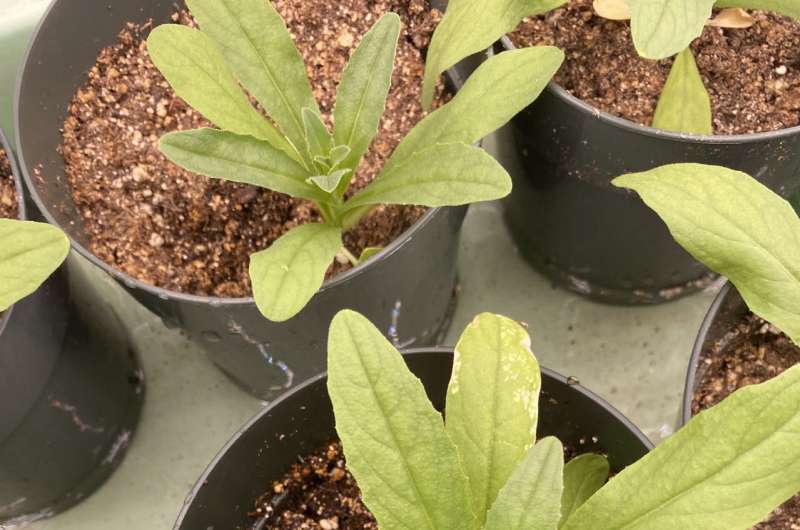This article has been reviewed according to Science X's editorial process and policies. Editors have highlighted the following attributes while ensuring the content's credibility:
fact-checked
trusted source
proofread
Plants' secret to surviving shorter days

The upcoming daylight saving time "fall back" may be a drag for many people—but new research from Michigan State University scientists reveals that plants have found ways to cope.
In a paper published in the journal Plant Physiology, MSU College of Natural Science faculty members Tom Sharkey and Yair Shachar-Hill and their team demonstrated that plants have multiple fine-tuned systems to deal with varying day lengths, which, in turn, could help to develop new crop varieties that can grow in a wider range of climates.
"I'm fascinated with the question, 'Does photosynthesis limit plant growth or does plant growth limit photosynthesis?'" said Sharkey.
Sharkey is a University Distinguished Professor in the Department of Biochemistry and Molecular Biology, or BMB, and a faculty member with the MSU-Department of Energy Plant Research Laboratory, or MSU-DOE PRL.
"And from that base question," Sharkey continued, "we wanted to know how growth would be affected if we further reduced the amount of light plants accustomed to shorter days had."
Adaptive mechanisms found through collaboration
To understand how plants adapt to different day lengths, a team of MSU researchers led by Sharkey and Shachar-Hill, a professor in the Department of Plant Biology, studied a plant called Camelina sativa, a model oilseed crop, using the Mass Spectrometry and Metabolomics Core on MSU's campus.
Their conclusion: plants have adapted to change the way they use their energy depending on the amount of daylight they receive.
The team found that when days are shorter, plants have less time to photosynthesize, so they need to be more efficient with the sunlight they do receive. Plants do this by increasing their photosynthetic rate and reducing their respiration rate. They also invest more energy in their shoots, where photosynthesis takes place.
As an additional mechanism, plants store more sugar as starch during the day so that they have energy to use during the longer night. They also slow down the exchange of metabolites between their vacuoles and other cellular compartments, which helps them to maintain their carbon balance during the night.
"MSU was the ideal place for this research because of the range of experts with which to collaborate," said Sharkey, who is also a Plant Resilience Institute faculty member.
In addition to Sharkey and Shachar-Hill, the research was bolstered by collaboration with Yuan Xu and Xinyu Fu, research associates in the MSU-DOE PRL and the Sharkey and Shachar-Hill labs; Sean Weise, an instructor in BMB; and Abubakarr Koroma, a researcher in the Department of Plant Biology.
Solutions for food system challenges
The results from this study continue the college's efforts of finding solutions to the challenges facing our global food system. In furthering our understanding of plant biology, the results could help lead to new crop varieties that are more productive and resilient to changes in weather or shifting growing zones.
"Our findings may point the way to improved plant growth," Sharkey said. "If we can identify the tricks the short-day plants use to almost keep up with the long-day plants, we might be able to make long-day plants even better."
More information: Yuan Xu et al, Daylength variation affects growth, photosynthesis, leaf metabolism, partitioning, and metabolic fluxes, Plant Physiology (2023). DOI: 10.1093/plphys/kiad507
Provided by Michigan State University

















